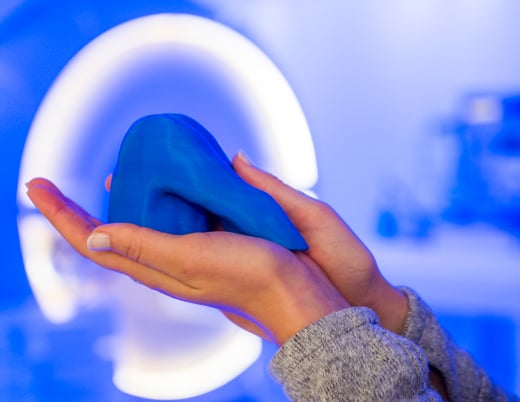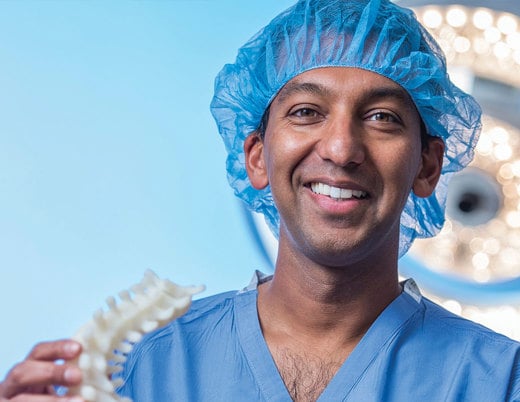Key takeaways
-
Recurring or late-presenting DDH raises risks for osteoarthritis, functional limits.
-
Current radiographic benchmarks poorly predicted dysplasia at 2 years old.
-
X-ray and ultrasounds combined with new benchmarks improve prediction of dysplasia.
Late hip dysplasia is difficult to predict
Developmental dysplasia of the hip is a spectrum of hip disorders ranging from complete dislocation of the hip to the abnormal development of the hip socket or acetabulum. While physical examination can diagnose hips that are unstable, there are no exam findings that can diagnose an abnormal acetabulum. A screening ultrasound is recommended for infants with risk factors for developmental dysplasia of the hip, such as family history and breech presentation, or if there is a hip click on an exam.

Early diagnosis and accurate treatment of infants with hip dysplasia leads to the best outcomes. Children with recurrent dysplasia at 2 years old are at increased risk for osteoarthritis and functional limitations in adulthood. There’s a 3-33% incidence of acetabular dysplasia at 2 years old after successful treatment.
Predicting recurrent or late-presenting dysplasia is difficult not only because it’s a developmental disease, but also because hip monitoring using X-rays offers minimal value in the first 6 months of life since the femoral head and labrum are still mostly cartilage and aren’t visible.
Evaluations and ongoing diagnosis by ultrasounds in conjunction with X-rays often begin when the patient is 6 months old and the femoral head has started to ossify. Evaluations are used to determine if the prior treatment was successful or if additional treatment is needed.
Study objective
Led by researchers in the Orthopedics Institute at Children’s Hospital Colorado, this study sought to compare ultrasound and X-ray imaging at 6 months of age and their ability to predict recurrent dysplasia at the age of 2 years. Study authors, including Gaia Georgopoulos, MD, Patrick M. Carry, PhD, Nancy Hadley-Miller, MD, Margaret Siobhan Murphy-Zane, MD, Reba Salton, and Christopher Brazell, DO, hypothesized that an ultrasound at 6 months old is a better predictor of dysplasia at 2 years old because an ultrasound visualizes cartilage better than an X-ray.
Studying children with idiopathic developmental dysplasia of the hip
Eligibility for participation in the study included:
- Children with primary diagnosis of idiopathic developmental dysplasia of the hip
- Successful Pavlik bracing treatment between 2009 and 2018
- Normal exam, ultrasound after 12 weeks of bracing
- Normal imaging at 6 months of age
- ≥ 60 degrees alpha angle on ultrasound
- ≥ 50% femoral head coverage on ultrasound
- < 30 degrees acetabular index on plain X-ray at 6 months old
- Followed at least 2 years
- Only treated at Children’s Colorado
- Did not require additional treatment at 6 months of age
- No other underlying neurological/teratologic conditions

Current predictive value of benchmarks for defining dysplastic hip at 6-month visit:
- Evaluated relative to definitive AI measurement on X-ray at 2-year follow-up
- > 24 degrees AI indicates dysplastic hip
- Normal hip at 6-month visit by ultrasound
- ≥ 60-degree alpha angle
- ≥ 50% femoral head coverage
- < 30-degree acetabular index
Results: Current diagnostic benchmarks poor predictors of late dysplasia
- 8-month median duration of Pavlik bracing
Comparison of Hips Classified as Dysplastic vs Non-Dysplastic at Two Years
| Dysplastic, N|mean (N=17) | Dysplastic, %|Stdev (N=17) | Non-Dysplastic, N|mean (N=42) | Non-Dysplastic, %|Stdev (N=42) | P Value | |
|---|---|---|---|---|---|
| Bilateral, n (%) |
17 |
100% |
42 |
100% |
>0.999 |
| Family History, n (%) |
3 |
17.6% |
5 |
11.9% |
0.6783 |
| Female, n (%) |
12 |
70.6% |
37 |
88.1% |
0.1332 |
| Unstable, n (%) |
9 |
52.9% |
21 |
50% |
0.8378 |
| Age at Initiation of Treatment [days], mean (stdev) |
33.4 |
26.4 |
30.7 |
26.4 |
0.7017 |
| Acetabular Index, mean (stdev) |
29.6 |
3.4 |
26.0 |
3.9 |
0.0017 |
| Alpha Angle, mean (stdev) |
68.6 |
2.8 |
73.2 |
4.7 |
0.0003 |
| Percent Femoral Coverage, mean (stdev) |
59.8 |
6.7 |
65.1 |
5.8 |
0.0037 |
The acetabular index values at the 2-year-old follow-up were used to determine prevalence of acetabular dysplasia in the population. There was a 28.8% prevalence of acetabular dysplasia at 24 months old.
- Alpha angle at 6 months old, acetabular index associated with highest area under the curve values (after adjusting for sex)
- Area under the curve values for cross-validation models lower than original observed models
- 95% confidence for all models excluded 0.50
- Models significantly better than random chance at predicting dysplasia at 2 years old
Receiver operating characteristic curve plots determined alternative benchmarks for ultrasound and X-ray parameters at 6-month-old visit.
- New benchmarks:
- Alpha angle ≥ 73 degrees
- Femoral head coverage ≥ 62%
- Acetabular index ≤ 24 degrees
- Composite test based on new benchmarks found to be best test for distinguishing hips that will or will not develop acetabular dysplasia at 2 years old
Discussion and conclusion: combo of X-ray, ultrasound and new benchmarks best predictors of dysplasia
The current diagnostic metrics for alpha angle, percent femoral head coverage and AI appear to be inadequate for predicting late acetabular dysplasia at the 2-year-old follow-up for patients who did not require additional treatment at 6 months old.
When used independently, they resulted in high rates of either overtreatment or undertreatment:
- Alpha angle: 100% specificity, 0.0% sensitivity
- Risk of undertreatment
- Femoral head coverage and acetabular index: 100% sensitivity
- High rates of unnecessary treatment
A combination of all diagnostic tests and this study’s newly designated values may offer the best predictive value of residual dysplasia at 2 years old. Considerations include:
- New values more restrictive, could drastically impact treatment implications for patients currently considered to have normal hips at 6 months old
- Possible increased cost for patient for both ultrasound and X-ray screenings
- Advanced scheduling for ultrasounds may be required
- Decision on what images are necessary for a patient at the treating provider’s discretion
- Family history, other risk factors, severity of original diagnosis, bracing response, should be considered
In conclusion, the study authors noted that the rate of residual dysplasia continues to be a concern. Other conclusions include:
- Both 6-month X-ray and ultrasound are important images
- New benchmarks, which must be validated, are recommended:
- Alpha angle: ≥ 73 degrees
- Femoral head coverage: > 62%
- Acetabular index: ≤ 24 degrees
- Prediction of dysplasia maximized when all metrics considered collectively
- Benchmarks should be reexamined if goal is capturing patients who will require further treatment and follow-up
Additional studies are needed to further validate the findings from this study’s data.
Featured researchers
Patrick Carry, MS, PhD
Assistant professor
Orthopedics
University of Colorado School of Medicine

Gaia Georgopoulos, MD
Orthopedic surgeon
The Orthopedics Institute
Children’s Hospital Colorado
Associate professor
Orthopedics
University of Colorado School of Medicine

Nancy Hadley-Miller, MD
Orthopedic Surgery
Children’s Hospital Colorado
Professor
Orthopedics
University of Colorado School of Medicine

Margaret Siobhan Murphy-Zane, MD
Orthopedic surgeon
The Orthopedics Institute
Children’s Hospital Colorado
Associate professor of clinical practice
Orthopedics
University of Colorado School of Medicine





 720-777-0123
720-777-0123











